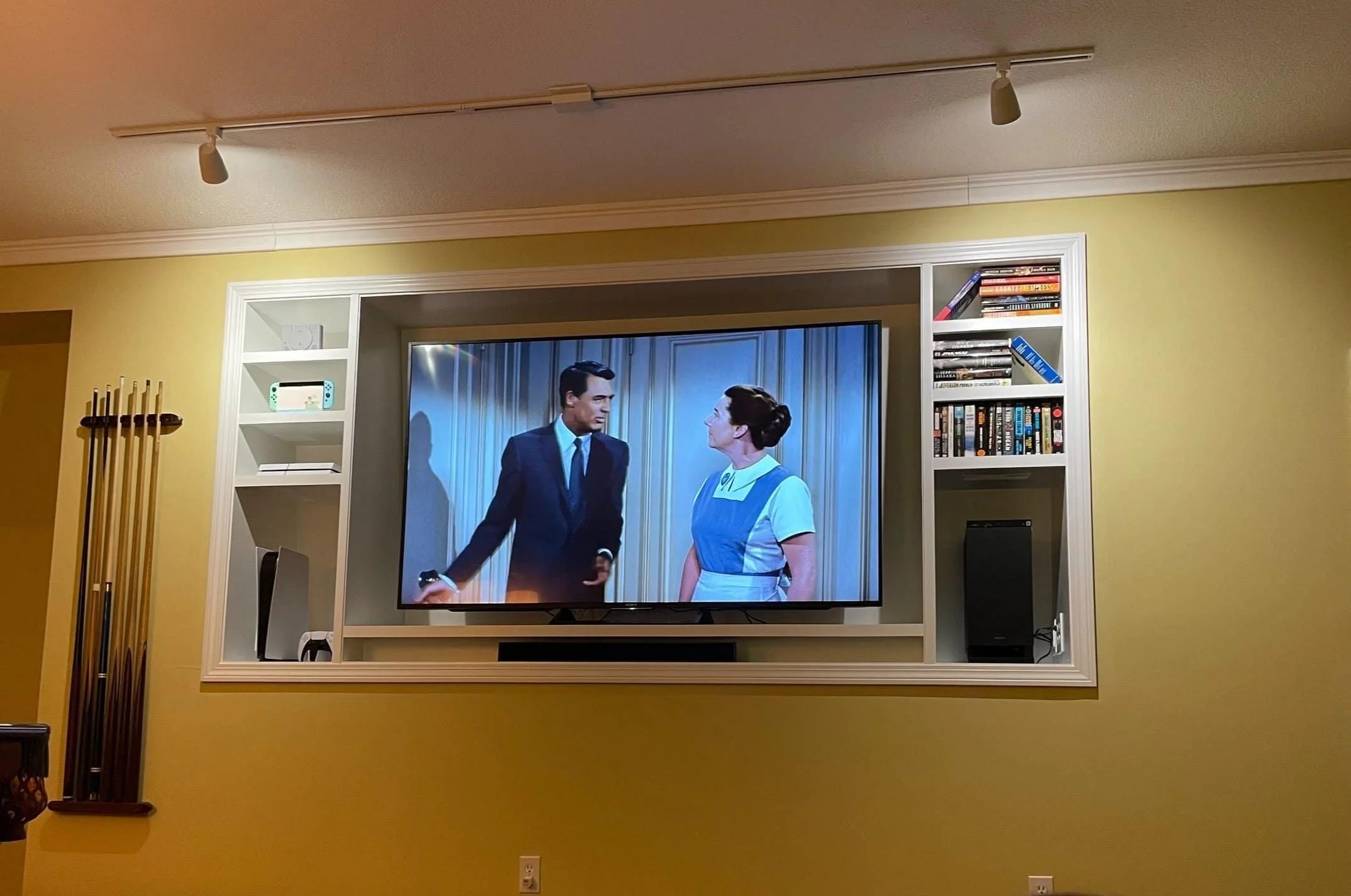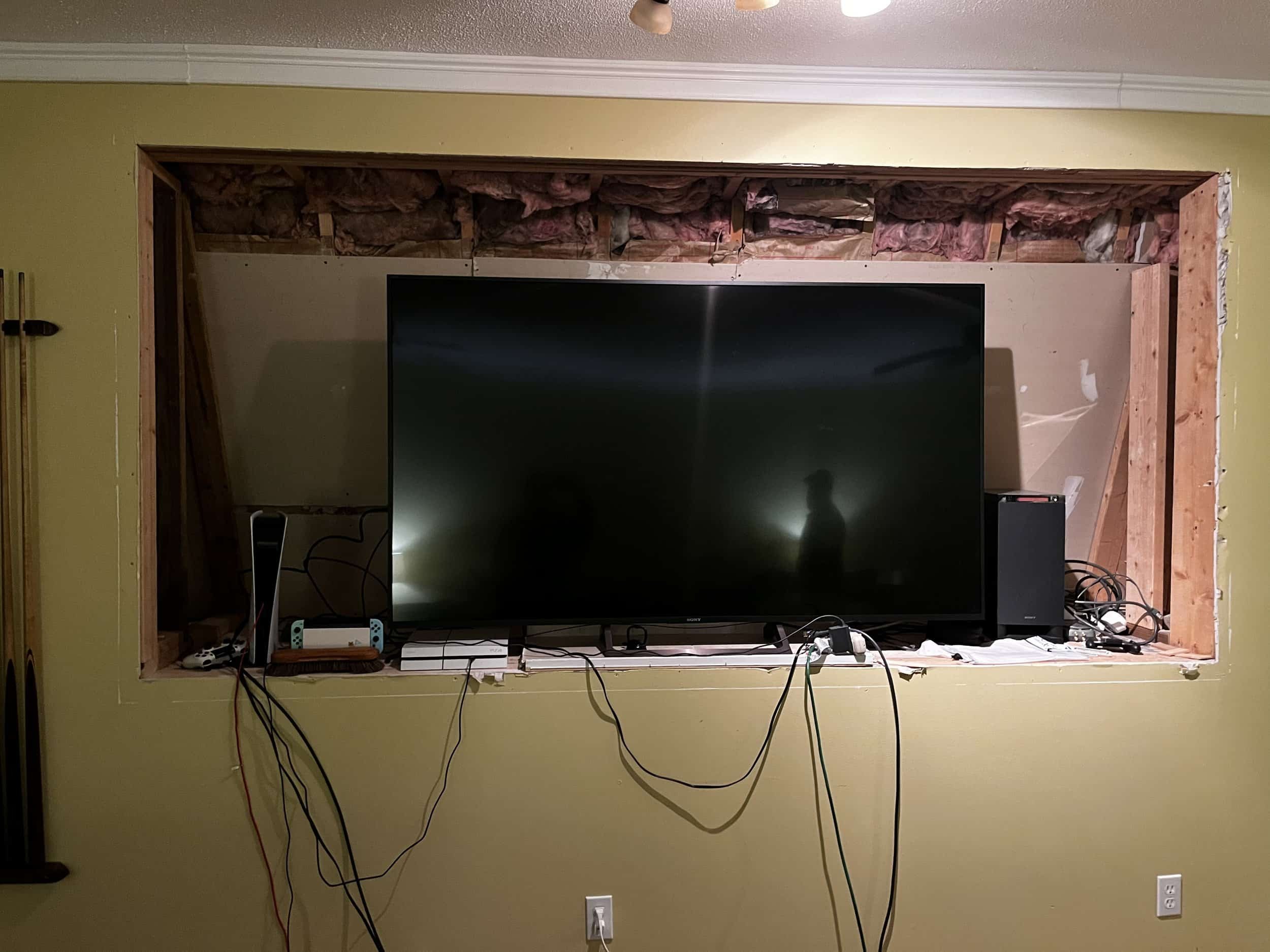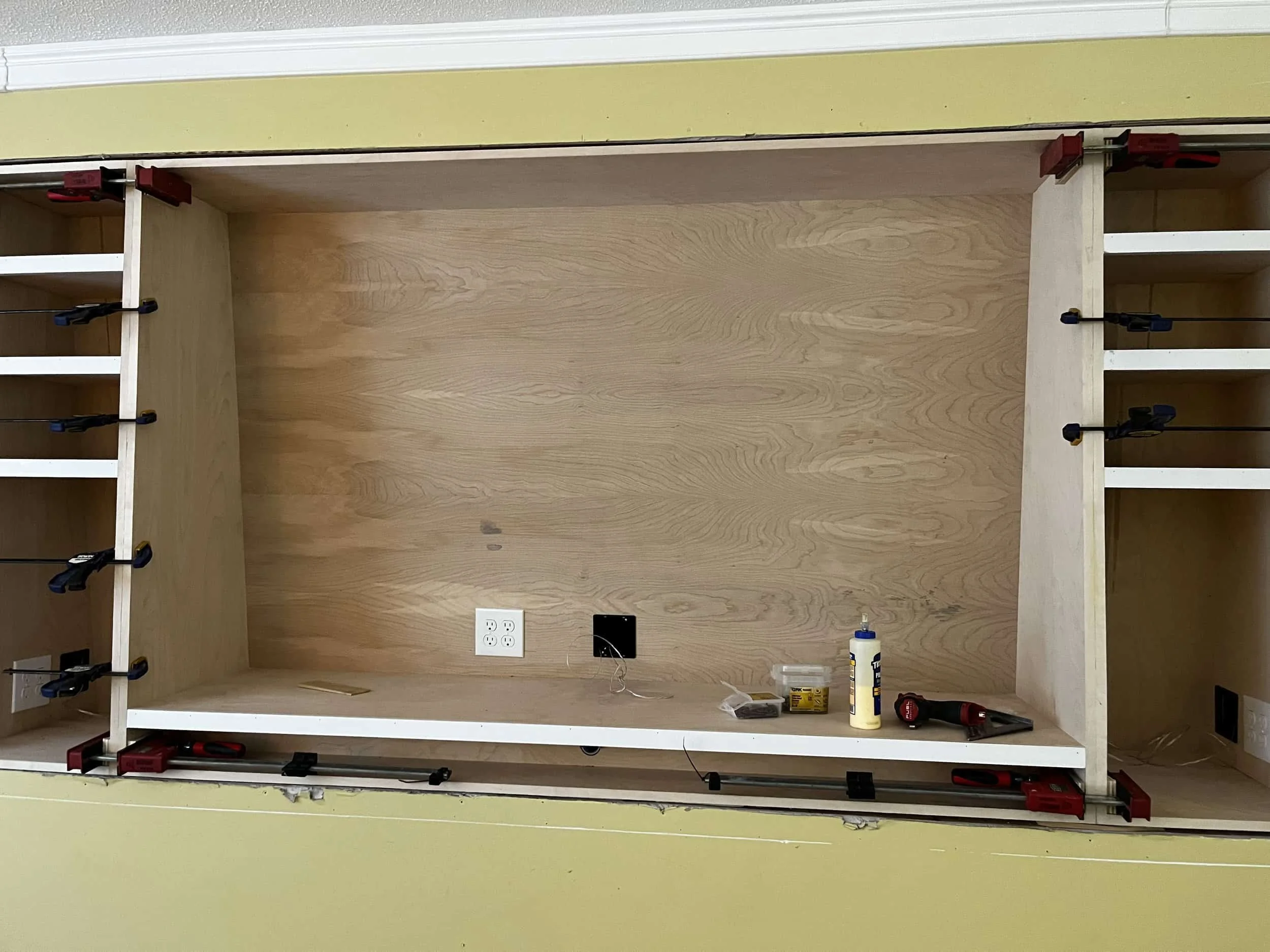How much do entertainment center built-ins cost?
We recently completed a set of built-ins to help our client in Barrington, NH get his television, game console, and audio equipment organized in his family room.
What did we do for our client? What are the best materials to use for a built-in project like this? How much did this project cost? Don’t worry, we’ll talk about all of it!
When would I need custom built-ins?
When our client bought his home, some shelves were built into the family room wall. Unfortunately, the size and spacing of the shelves didn’t work with the TV and audio equipment he owns.
Our client found himself getting very frustrated as he tried to set up his TV and audio equipment in the existing space. As he tried to get all of his equipment into the space, he realized that the existing built-ins weren’t going to work for him. So, he decided to remove them altogether and reach out to us for a better solution.
What is the process for having an entertainment center built?
After he reached out to us, we came into our client’s home, measured all of his equipment, and worked with him to create a plan for a built-in unit that would have a custom compartment for each piece. We then made recommendations of materials to use to create a beautiful, long-lasting built-in.
Once all of the details were sorted out, we got to work! We covered the floors in the family room with drop cloths, set up a workstation in front of his garage, and started building!
We cut panels for this new entertainment center out of 3/4” cabinet-grade plywood. We then sanded the panels and assembled the unit in three sections.
When the sections were assembled, it was time to install them!
As we installed the sections, our electrician ran new wires and installed both 120v and low voltage outlets into the built-ins.
Once the cabinets were installed, we installed casing molding around the unit before priming and painting the unit to match the white, semi-gloss trim in the rest of the room.
The family room was now complete! Our client had a cubby for his TV, one for his game console, another for his audio equipment, a place to hide his cables, and accent lighting for any nicknacks or collectibles he might want to put on the extra shelves! He was thrilled to finally have his family room neatly and beautifully organized!
What are the best materials to build a custom entertainment center?
Our client chose cabinet-grade birch plywood with a veneer core (a core made of real wood), finger-jointed wood moldings, and a painted finish for his built-ins.
Anytime we are building cabinetry, shelving, or built-ins, we use cabinet-grade plywood for the build. Cabinet-grade plywood has a more uniform core than standard plywood, so it is flatter and easier to build with. It also has a very smooth surface, due to the use of a premium veneer (a very thin layer of wood) on the surface of the panel.
For this build, we used birch plywood because birch provides a great surface for paint, and it is less expensive than other hardwood species, like maple or oak. Since the built-in was getting painted, using a more expensive hardwood wouldn’t add any value to the finished product. Cabinet-grade poplar plywood would have been another good choice for a paint-grade built-in project.
We used primed, finger-jointed moldings for the accents on this build. Much like the reasoning we used to select the plywood, finger-jointed moldings are durable because they are made of real wood, but they cost less than stain-grade “clear” moldings. (To learn what finger-jointed lumber is, read our article here)
We primed this unit with Sherwin Williams Premium Wall & Wood Primer and painted it with Sherwin Williams Emerald Urethane Trim Enamel that was custom mixed to match the trim color in the room. These premium products are much harder, and more scuff resistant than standard wall paints. Scuff resistance is very important for things like cabinets, shelving, trim, and (of course) built-ins.
What upgrades can I make to a custom built-in?
On this project, our client asked us to install electrical outlets and hidden tubing for his audio and video cables. These options aren’t usually necessary for basic built-in projects like bookcases. For an entertainment center, though, these are both very good options to consider. 120v outlets can be placed where they will be needed to plug in televisions, game consoles, or audio equipment. The low-voltage tubing is a great way to hide audio and video cables, keeping your entertainment center neat and organized.
As if it wasn’t enough to have a custom space for every piece of equipment he owned, outlets wherever he needed them, and a space to hide his audio and video cables, our client decided that the built-ins should have some accent lighting! So, we had our electrician install a track light with two dimmable accent lights, one on each side of the new entertainment center! Accent lighting is another great upgrade to consider for built-in projects!
Some people will want their built-ins to be stained instead of painted. Stain-grade projects will often warrant the use of upgraded wood products, like oak, maple, or cherry plywood, lumber, and moldings.
Another option that could be added would be doors or drawers. These could be added to the built-ins, either to hide certain pieces of equipment or create a more functional space for storing items.
Organizers, like the ones commonly used in today’s kitchens, could also be integrated into built-ins, to upgrade the organizational features of the unit.
How much does a custom entertainment center cost?
The built-in unit we created for our client was approximately 4 1/2 feet tall and 9 feet wide. This built-in entertainment center required an investment of around $7200, and the electrical work associated with it cost about $1800, making the total investment for this project right around $9000.
Adding more lighting, using stain-grade materials instead of paint-grade materials, or adding doors or drawers to the unit would have increased the cost of this project substantially. This project was relatively simple, as far as built-ins go, so there weren’t many options to bring the cost down other than using inferior materials for the build (which we don’t recommend), or forgoing some of the electrical upgrades we made.
Our client is thrilled to finally have a neatly organized, beautiful space to relax and watch TV, play games, or listen to music! He can rest easy knowing that his entertainment center will last for a very long time because we used real wood to build it! And, because we used paint-grade materials, the project didn’t break the bank!





